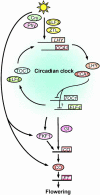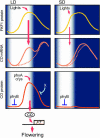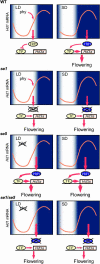The molecular basis of diversity in the photoperiodic flowering responses of Arabidopsis and rice
- PMID: 15208414
- PMCID: PMC514104
- DOI: 10.1104/pp.104.042614
The molecular basis of diversity in the photoperiodic flowering responses of Arabidopsis and rice
Figures



References
-
- Alabadi D, Oyama T, Yanovsky MJ, Harmon FG, Mas P, Kay SA (2001) Reciprocal regulation between TOC1 and LHY/CCA1 within the Arabidopsis circadian clock. Science 293: 880–883 - PubMed
-
- Bünning E (1936) Die endogene Tagesrhythmik als Grundlage der photoperiodischen Reaktion. Ber Dtsch Bot Ges 54: 590–607
-
- Doyle MR, Davis SJ, Bastow RM, McWatters HG, Kozma-Bognar L, Nagy F, Millar AJ, Amasino RM (2002) The ELF4 gene controls circadian rhythms and flowering time in Arabidopsis thaliana. Nature 419: 74–77 - PubMed
-
- Dunlap JC (1999) Molecular bases for circadian clocks. Cell 96: 271–290 - PubMed
Publication types
MeSH terms
Substances
LinkOut - more resources
Full Text Sources

